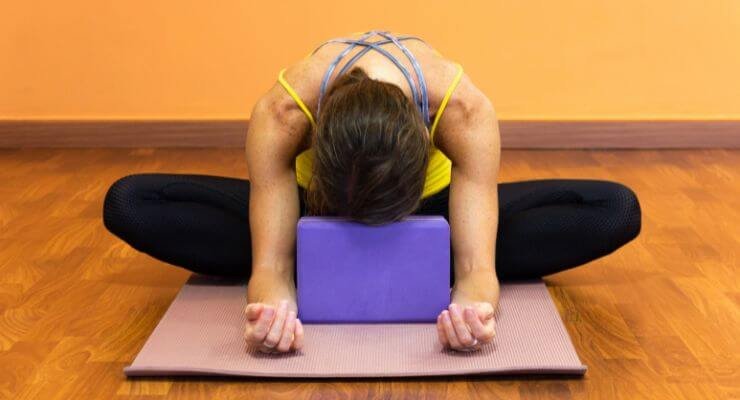Yoga For Pregnancy or Prenatal yoga is a popular form of exercise that many pregnant women turn to for its physical and mental benefits. This gentle form of yoga is specifically designed for pregnant women and can help them prepare for childbirth, reduce stress, and alleviate pregnancy-related discomforts. Prenatal yoga is safe for most expectant mothers and can be practiced at any stage of pregnancy.
Yoga for pregnancy involves modified poses that are safe for both the mother and the growing fetus. These poses are designed to help improve flexibility, balance, and strength, while also promoting relaxation and reducing stress. Prenatal yoga classes are often led by instructors who are trained in working with pregnant women and can provide modifications for each trimester.
Studies have shown that practicing prenatal yoga can have numerous benefits for both the mother and the baby. It can help reduce the risk of preterm labor, lower the risk of gestational diabetes, and improve sleep quality. Additionally, prenatal yoga can help women prepare for labor and delivery by strengthening the muscles used during childbirth and improving overall endurance.
Understanding Pregnancy and Yoga
Pregnancy is a unique and transformative experience for women, both physically and emotionally. Practicing yoga during pregnancy can help women navigate the changes and challenges that come with this journey. In this section, we will explore the benefits of yoga during pregnancy, the physical and emotional challenges of pregnancy, and safety precautions for pregnant yogis.
Benefits of Yoga During Pregnancy
Research suggests that prenatal yoga can have many benefits for pregnant women and their babies. Prenatal yoga can:
- Improve sleep
- Reduce stress and anxiety
- Increase the strength, flexibility, and endurance of muscles needed for childbirth
- Decrease lower back pain, nausea, headaches, and shortness of breath
In addition, practicing yoga during pregnancy can help women prepare for labor and delivery by teaching them breathing techniques and relaxation skills.
Physical and Emotional Challenges of Pregnancy
Pregnancy can bring both physical and emotional challenges for women. Physically, women may experience changes in their body that can cause discomfort, such as back pain, swelling, and fatigue. Emotionally, women may feel anxious, overwhelmed, or uncertain about the changes that are happening.
Practicing yoga during pregnancy can help women cope with these challenges by providing a safe and supportive environment to connect with their bodies and their babies. Yoga can also help women build strength, flexibility, and resilience, which can be helpful during labor and delivery.
Safety Precautions for Pregnant Yogis
While prenatal yoga can be a safe and effective practice for pregnant women, there are some safety precautions to keep in mind. It is important for pregnant women to:
- Consult with their healthcare provider before starting or continuing a yoga practice
- Choose a qualified prenatal yoga teacher who is experienced in working with pregnant women
- Avoid certain poses, such as deep twists, backbends, and inversions, that may be unsafe during pregnancy
- Listen to their body and modify their practice as needed to accommodate the changes that are happening
By following these safety precautions, pregnant women can enjoy the many benefits of yoga while keeping themselves and their babies safe.
Yoga Poses for Each Trimester
Prenatal yoga is a safe and effective way to stay active and healthy during pregnancy. It can help reduce stress, alleviate common pregnancy discomforts, and prepare the body for childbirth. However, it’s important to modify your yoga practice as your pregnancy progresses and your body changes. Here are some yoga poses that are safe and beneficial for each trimester of pregnancy.
First Trimester Yoga Poses
During the first trimester, it’s important to take it easy and avoid any poses that put pressure on the abdomen or involve deep twists. Here are some yoga poses that are safe and gentle for the first trimester:
- Mountain Pose: Stand with feet hip-width apart and arms at your sides. Press into your feet and lift the crown of your head towards the ceiling. Take a few deep breaths in this pose to center yourself.
- Cat-Cow Stretch: Come onto your hands and knees, with your wrists directly under your shoulders and your knees under your hips. Inhale and arch your back, lifting your head and tailbone towards the ceiling (cow pose). Exhale and round your spine, tucking your chin to your chest and bringing your tailbone towards your knees (cat pose). Repeat for several breaths.
- Child’s Pose: From hands and knees, lower your hips back towards your heels and stretch your arms out in front of you. Rest your forehead on the mat and take several deep breaths in this pose.
Second Trimester Yoga Poses
During the second trimester, you may start to feel more comfortable and energized. However, it’s important to avoid any poses that involve lying on your back or stomach. Here are some yoga poses that are safe and energizing for the second trimester:
- Warrior II: Stand with your feet wide apart and turn your right foot out to the side. Bend your right knee and extend your arms out to the sides, parallel to the floor. Look over your right hand and hold for several breaths. Repeat on the other side.
- Triangle Pose: From Warrior II, straighten your right leg and reach your right arm forward, then down towards your right shin. Extend your left arm up towards the ceiling and gaze up at your left hand. Hold for several breaths and repeat on the other side.
- Squat: Stand with your feet wider than hip-width apart and turn your toes out to the sides. Bend your knees and lower your hips down towards the floor, keeping your heels on the ground. Bring your hands together at your heart and press your elbows against your inner thighs. Hold for several breaths.
Third Trimester Yoga Poses
During the third trimester, it’s important to avoid any poses that involve lying on your back or stomach, as well as any poses that require balance or involve deep twists. Here are some yoga poses that are safe and calming for the third trimester:
- Supported Bridge Pose: Lie on your back with your knees bent and feet on the floor. Place a block or bolster under your hips for support. Relax your arms at your sides and take several deep breaths in this pose.
- Wide-Legged Forward Fold: Stand with your feet wide apart and fold forward from your hips, keeping your back straight. Rest your hands on a block or the floor and take several deep breaths in this pose.
- Legs-Up-The-Wall Pose: Lie on your back with your hips close to a wall. Extend your legs up the wall and rest your arms at your sides. Relax in this pose for several minutes.
Poses to Avoid or Modify
During pregnancy, it’s important to listen to your body and avoid any poses that feel uncomfortable or cause pain. Here are some yoga poses that should be avoided or modified during pregnancy:
- Deep Twists: Avoid any poses that involve deep twisting of the abdomen, such as Marichyasana II and III or Ardha Matsyendrasana. Substitute an open-twist variation of the pose instead by twisting away from your bent leg rather than toward it.
- Lying on Your Back or Stomach: Avoid any poses that involve lying on your back or stomach, such as Savasana or Cobra Pose. Modify these poses by propping yourself up with pillows or bolsters, or by practicing them in a seated or standing position.
- Balancing Poses: Avoid any poses that require balance, such as Tree Pose or Warrior III. Modify these poses by practicing them with the support of a wall or chair, or by holding onto a partner or support.
Pranayama for Pregnancy
Pranayama, the practice of controlling one’s breath, can be a valuable tool for expecting mothers to manage stress, increase relaxation, and prepare for labor. Here are some breathing techniques that pregnant women can practice to help them throughout their pregnancy journey.
The Significance of Breath in Pregnancy
Breath is an essential aspect of life, and it becomes even more important during pregnancy. As the baby grows, the mother’s body undergoes several changes, including an increase in blood volume and hormonal fluctuations. These changes can cause shortness of breath and difficulty breathing. Practicing pranayama can help expecting mothers cope with these changes and improve their overall well-being.
Breathing Techniques for Relaxation and Pain Management
- Deep Breathing: Also known as diaphragmatic breathing, this technique involves inhaling deeply through the nose and exhaling slowly through the mouth. It can help calm the nervous system and reduce stress levels.
- Nadi Shodhana: This technique, also known as alternate nostril breathing, involves inhaling through one nostril and exhaling through the other. It can help balance the body’s energy and reduce anxiety and stress.
- Ujjayi: This technique involves inhaling deeply through the nose and exhaling through the mouth, while constricting the back of the throat. It can help calm the mind and reduce tension.
- Bhramari: Also known as humming bee breath, this technique involves inhaling deeply through the nose and exhaling while making a humming sound. It can help reduce anxiety and promote relaxation.
Preparing for Labor with Pranayama
Practicing pranayama during pregnancy can also help expecting mothers prepare for labor. The following techniques can be particularly helpful:
- Slow Breathing: This technique involves inhaling deeply and exhaling slowly. It can help reduce pain and promote relaxation during labor.
- Pursed Lip Breathing: This technique involves inhaling deeply through the nose and exhaling through pursed lips. It can help reduce shortness of breath and increase relaxation.
- Visualization: This technique involves imagining a peaceful scene while practicing deep breathing. It can help reduce anxiety and promote relaxation during labor.
It is important to note that pregnant women should consult with their healthcare provider before starting any new exercise or breathing routine. With the right guidance and practice, pranayama can be a valuable tool for expecting mothers to manage stress, increase relaxation, and prepare for labor.
Meditation and Mindfulness for Expecting Mothers
Pregnancy can be a stressful time, and for many expectant mothers, meditation and mindfulness practices can be a helpful tool to reduce stress and promote a sense of calm. Here are some ways that meditation and mindfulness can benefit pregnant women.
Reducing stress and anxiety during pregnancy
Research has shown that mindfulness practices can help reduce stress, anxiety, and depression during pregnancy. A systematic review of mindfulness-based interventions during pregnancy found that these practices can improve mental health outcomes for expectant mothers. Another study found that mindfulness-based childbirth education reduced the risk of postpartum depression and anxiety.
Guided meditations for expectant mothers
Guided meditations can be a helpful tool for expectant mothers who are new to meditation. There are many guided meditations available online that are specifically designed for pregnancy. These meditations can help women connect with their bodies and their growing babies, and can also help prepare them for childbirth.
Building a mindfulness practice
Building a mindfulness practice during pregnancy can be a helpful tool for coping with stress and anxiety. Some tips for building a mindfulness practice during pregnancy include:
- Starting with short meditation sessions and gradually increasing the length of time.
- Finding a quiet and comfortable space to meditate.
- Focusing on the breath or another point of focus to help quiet the mind.
- Practicing mindfulness throughout the day, such as while doing household chores or walking.
Overall, meditation and mindfulness practices can be a helpful tool for expectant mothers who are looking to reduce stress and promote a sense of calm during pregnancy. By building a mindfulness practice and incorporating guided meditations, women can prepare themselves both mentally and emotionally for childbirth and motherhood.
Yoga for Pregnancy-Related Conditions
Pregnancy can cause a variety of physical and emotional changes that can be challenging to manage. Fortunately, yoga can help alleviate many pregnancy-related conditions, including back pain, stress, and anxiety.
Yoga for Back Pain
Back pain is a common pregnancy complaint, affecting up to 70% of pregnant women. Practicing yoga can help alleviate back pain by strengthening the muscles that support the spine and improving flexibility. Some yoga poses that can help relieve back pain during pregnancy include:
- Cat-Cow Stretch: This pose involves moving the spine between a rounded position (cat) and an arched position (cow). It can help relieve tension in the back and neck.
- Child’s Pose: This gentle resting pose can help stretch the lower back and hips.
- Pigeon Pose: This hip-opening pose can help relieve tension in the hips and lower back.
Yoga for Stress and Anxiety
Pregnancy can be a stressful time, and many women experience anxiety during pregnancy. Practicing yoga can help reduce stress and anxiety by promoting relaxation and mindfulness. Some yoga poses that can help reduce stress and anxiety during pregnancy include:
- Corpse Pose: This pose involves lying on the back with the arms and legs extended. It can help promote relaxation and reduce stress.
- Legs-Up-The-Wall Pose: This restorative pose involves lying on the back with the legs extended up the wall. It can help reduce stress and fatigue.
- Meditation: Practicing mindfulness meditation can help reduce stress and anxiety during pregnancy. It involves focusing on the present moment and accepting thoughts and feelings without judgment.
Overall, practicing yoga during pregnancy can help alleviate many pregnancy-related conditions, including back pain, stress, and anxiety. However, it is essential to practice yoga safely during pregnancy and consult with a healthcare provider before starting any new exercise program.
Postnatal Yoga
Postnatal yoga is a great way for new mothers to ease their way back into physical activity after giving birth. It is important to remember that postpartum bodies are healing and recovering, so it is crucial to listen to your body and move at a pace that feels comfortable.
Recovery with Yoga After Birth
Postnatal yoga is an excellent way to aid in the recovery process after birth. It can help to strengthen the core and pelvic floor muscles, which are often weakened during pregnancy and childbirth. Additionally, postnatal yoga can help to reduce stress and anxiety, which can be beneficial for new mothers who are adjusting to life with a newborn.
Some of the poses that are commonly practiced in postnatal yoga include gentle twists, hip openers, and chest openers. These poses can help to release tension in the body and promote relaxation. It is important to remember to breathe deeply and move slowly, as the body is still healing and recovering.
Yoga for Strengthening Pelvic Floor Muscles
Pelvic floor muscles are important for supporting the bladder, uterus, and bowel. During pregnancy and childbirth, these muscles can become weakened, which can lead to issues such as urinary incontinence. Practicing yoga can help to strengthen these muscles and reduce the risk of these issues.
Some of the poses that can be beneficial for strengthening the pelvic floor muscles include kegels, bridge pose, and goddess pose. These poses can help to engage the pelvic floor muscles and improve their strength over time. It is important to remember to breathe deeply and move slowly, as the pelvic floor muscles can be sensitive after childbirth.
Overall, postnatal yoga can be a great way for new mothers to ease their way back into physical activity and aid in the recovery process after childbirth. It is important to remember to listen to your body and move at a pace that feels comfortable.
Community and Support: Yoga For Pregnancy
Pregnancy can be an exciting and joyful time, but it can also be challenging and stressful. Joining a prenatal yoga class or community can provide a supportive environment where expectant mothers can connect with others who are going through similar experiences.
Joining prenatal yoga classes and communities
Prenatal yoga classes offer a safe and gentle way for expectant mothers to stay active and healthy during pregnancy. These classes are specifically designed to address the physical and emotional needs of pregnant women. In addition to providing a great workout, prenatal yoga classes can also help women prepare for childbirth and motherhood.
Joining a prenatal yoga community can also provide a sense of belonging and support. Many communities offer social events, workshops, and other resources that can help expectant mothers navigate the challenges of pregnancy and motherhood.
Connecting with other expectant mothers
Connecting with other expectant mothers can be a powerful way to build a support network during pregnancy. Prenatal yoga classes and communities can be a great place to meet other expectant mothers who are going through similar experiences.
In addition to prenatal yoga classes, there are many other ways to connect with other expectant mothers. Online forums, social media groups, and local support groups can all be great resources for finding community and support during pregnancy.
The power of sharing experiences
Sharing experiences with other expectant mothers can be a powerful way to reduce stress and anxiety during pregnancy. When women share their experiences, they often find that they are not alone in their struggles. This can provide a sense of comfort and validation that can be incredibly empowering.
In addition to reducing stress and anxiety, sharing experiences can also help women prepare for childbirth and motherhood. When women share their experiences, they often learn new tips and strategies for coping with the challenges of pregnancy and motherhood.
Overall, joining a prenatal yoga class or community can be a great way to build a support network during pregnancy. By connecting with other expectant mothers and sharing experiences, women can reduce stress and anxiety, prepare for childbirth and motherhood, and feel more empowered and supported throughout their pregnancy journey.
Conclusion
Prenatal yoga is a safe and effective way to improve physical and mental health during pregnancy. According to a systematic review published in the European Journal of Obstetrics, Gynecology, and Reproductive Biology, practicing yoga during pregnancy can decrease stress levels, anxiety scores, depression scores, and pain response, as well as increase maternal immunity and emotional well-being. Moreover, prenatal yoga is associated with improved outcomes during labor and delivery, such as reduced duration of labor, lower rates of cesarean section, and decreased use of pain medication.
Encouragement to explore prenatal yoga
If you are pregnant and considering practicing yoga, it is important to consult with your healthcare provider first. Once you have been cleared for physical activity, you can explore different types of prenatal yoga classes, such as Hatha, Vinyasa, or Restorative yoga. Look for classes that are specifically designed for pregnant women and taught by certified prenatal yoga instructors. These classes typically focus on poses that are safe and beneficial for pregnancy, as well as breathing techniques and relaxation exercises that can help you cope with the physical and emotional changes of pregnancy.
Nurturing yourself and your baby through the practice
Prenatal yoga is not only a physical practice, but also a way to connect with your body, your breath, and your growing baby. It can help you cultivate mindfulness, self-awareness, and compassion towards yourself and your baby. As you move through the poses, you can visualize your baby, send positive intentions, and create a sense of calm and relaxation that can benefit both you and your baby. Remember to listen to your body, honor your limits, and modify the poses as needed. With regular practice, prenatal yoga can be a powerful tool for nurturing yourself and your baby throughout pregnancy and beyond.
Frequently Asked Questions
What are the benefits of prenatal yoga?
Prenatal yoga has several benefits for expectant mothers. It can help reduce stress and anxiety, improve sleep, increase the strength, flexibility, and endurance of muscles needed for childbirth, decrease lower back pain, nausea, headaches, and shortness of breath, and prepare for the stress of being a new parent. [1] [2]
When should you start practicing prenatal yoga?
It is recommended to start practicing prenatal yoga after the first trimester and with the approval of a healthcare provider. [1]
What are some safe yoga poses for pregnancy?
Some safe yoga poses for pregnancy include cat-cow stretch, pelvic tilts, warrior II, tree pose, and modified pigeon pose. [1] [3]
Are there any yoga poses that should be avoided during pregnancy?
Yes, there are some yoga poses that should be avoided during pregnancy, such as deep twists, backbends, and inversions. It is also important to avoid any poses that cause discomfort or pain. [1] [3]
Where can I find free prenatal yoga resources?
There are several free prenatal yoga resources available online, such as YouTube channels, websites, and apps. Some popular options include Yoga with Adriene, Prenatal Yoga Center, and Do Yoga With Me. [1]
What are some recommended books on yoga for pregnancy?
Some recommended books on yoga for pregnancy include “The Pregnant Yogi” by Tara Lee, “Yoga Mama: The Practitioner’s Guide to Prenatal Yoga” by Linda Sparrowe, and “Prenatal Yoga: Finding Movement in Fullness” by Stephanie Snyder. [4]





